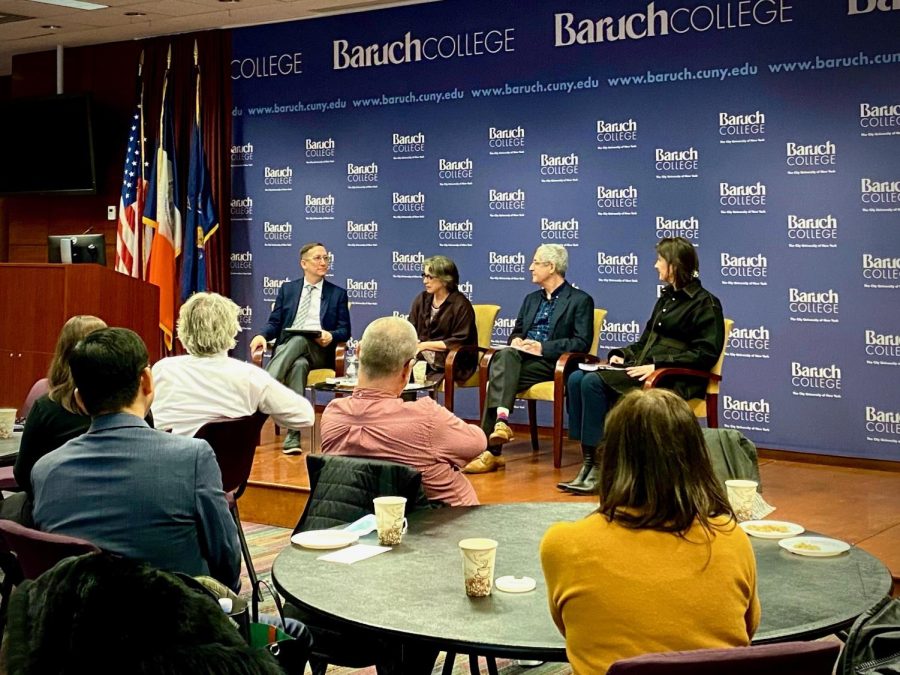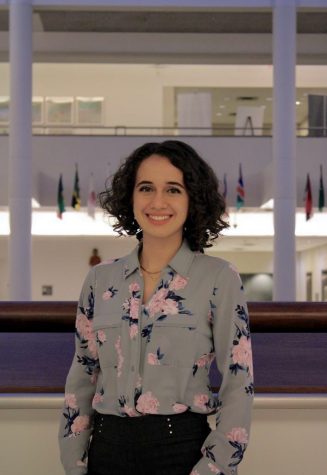Baruch provost talks art and entrepreneurship in new book
April 9, 2022
Provost and Senior Vice President for Academic Affairs Linda Essig discussed her new book, “Creative Infrastructures: Artists, Money and Entrepreneurial Action,” at an event on March 31 in the William and Anita Newman Library.
About 38 people, mostly professors and faculty members, attended the event.
Professor David Milch, who leads Baruch College’s graduate program in arts administration, moderated the discussion. Zicklin School of Business Professor Lilia Ziamou and Marxe School of Public and International Affairs Professor John Casey also joined the conversation.
Published with Intellect, Essig’s book is composed of essays and case studies that examine the relationships between art, innovation, entrepreneurship and money.
Essig interviewed 15 artists — ones she knew personally or met through art circles — over the course of several years about how they make a living as an artist.
Ziamou, who teaches marketing, discussed the relationship between technology and art at the event.
“Making art and being an entrepreneur is very, very similar,” she said.
Ziamou said technology influences artistic and entrepreneurial practice in three main areas: production, social media and community.
“It’s easy to find like-minded people, to find communities to enable artists and entrepreneurs to have a conversation, exchange ideas and find opportunities for collaboration,” she said, highlighting how artists and entrepreneurs use social media to share their work.
Technology also reduces the need for a large media organization to help with distribution, Essig said.
Her favorite essay in her book is the fourth, which is about reproduction and originality. It discussed how copyright policy affects the way artists can or can’t use pre-existing materials.
“It was the most outside of my original wheelhouse,” Essig said.
In the last essay, she imagines a future 30 years from now by profiling three imaginary artists.
Milch spoke about New York City’s first-ever cultural plan, CreateNYC, which was released in 2017. He also highlighted that the New York City Department of Cultural Affairs has the largest arts funding budget in the country.
Essig characterized New York City as the center of arts, culture and entertainment due to its concentration of artists that can be in dialogue with each other.
“In New York City, there’s a really dense population of artists, arts supporters, arts administrators, arts advocates, arts policymakers,” she said. “We may be young in having a cultural plan, but we have a culture.”
Essig also discussed the impact of the COVID-19 pandemic on art and emergency grants for artists.
While there was suffering, the pandemic also gave artists “concentrated time” to finish their work, Essig said. She was only able to finish her book due to the lack of in-person work and events.
“It’s that level of community cohesion that in some ways we lost during the pandemic, in terms of the communities we have at work,” she said. “But in my own personal experience, the community cohesion at home became more important. We helped our neighbors.”
Ziamou mentioned how technology allowed people to also connect with online communities during the pandemic.
“Art is in our life every day and in every way,” Essig said. “It seems essential.”








